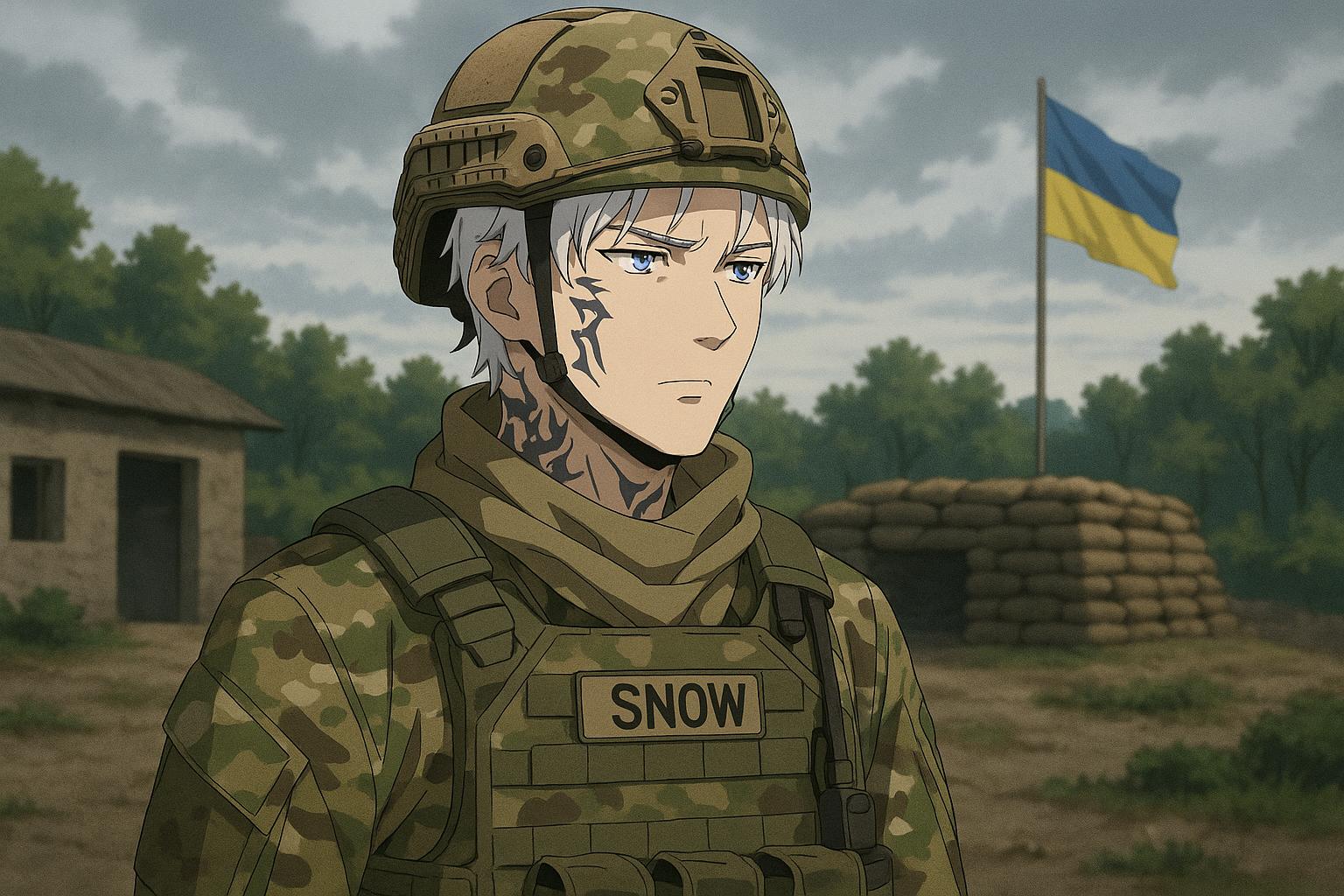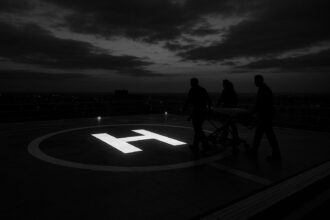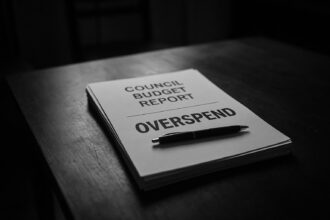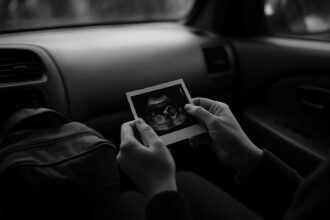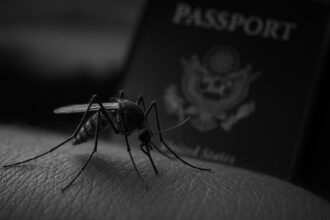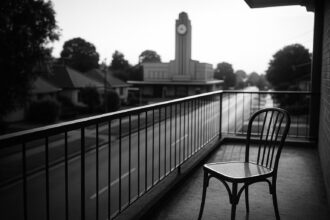As the war in Ukraine enters its fourth year, a growing number of foreign volunteers are adopting a more pragmatic and battle-hardened approach to fighting. Veterans like Snow, a former Royal Anglian Regiment soldier, now recruit only those prepared for the brutal realities of combat, reflecting a shift away from the romanticism that characterised early volunteer waves.
A secluded training base located just 25 miles from the frontlines of Ukraine presents a striking contrast: a softly-spoken 26-year-old from Northamptonshire, whose call sign is Snow, stands prepared to face the grim uncertainties of war. Once a member of the Royal Anglian Regiment, Snow embodies a growing cadre of foreign fighters – both veterans and civilians – who have chosen to join Ukraine’s armed forces in its ongoing conflict with Russia. He acknowledges the risks of his choice, stating, “I expect to die out here. I am very at peace with that.” Such acceptance of mortality is echoed throughout the ranks of those who have volunteered to fight for what they deem a just cause.
Having left the UK approximately two years ago, Snow has witnessed the horrors of the battlefield up close, fighting extensively with Ukraine’s Defence Intelligence (GUR). His heavily tattooed face, adorned with three teardrops beneath his left eye, signifies the Russian lives he claims to have taken; each teardrop represents ten enemy combatants, an assertion that reveals both bravado and the grim reality of his role. Snow has been involved in significant combat in Russian territory and key Ukrainian cities, earning both a Presidential Medal and a Special Operations Medal for his valour.
Now entrusted with the responsibility of recruiting English-speaking volunteers for a unit within Ukraine’s 3rd Assault Brigade, Snow has devised a strict selection process. “Selfie soldiers, TikTok warriors and glory chasers need not apply,” he states firmly. The new recruits must be ready to confront the stark, brutal truths of warfare, especially as the conflict drags into its fourth year. This evolution in recruitment underscores a fundamental shift in expectations: while early waves of foreign volunteers included many motivated by romantic notions of combat, Snow stresses that participants must understand the physical and psychological toll of active engagement.
Recent trends indicate a surge in foreign volunteers, following shifts in the geopolitical landscape and fluctuating support from Western nations. For instance, there was a marked increase in applications after notable exchanges between global leaders, including a reaction to the controversial statements made by Donald Trump regarding Ukrainian President Volodymyr Zelensky. With Russia seemingly bolstering its ranks through mobilisation efforts, including an announcement of 160,000 additional troops, the integration of foreign fighters becomes essential not only for military strength but also for maintaining morale among Ukrainian forces.
This recruitment adaptation is vital, especially as the demographics of Ukraine skew unfavourably due to a decline in birth rates since the dissolution of the Soviet Union, leading to a smaller pool of young men available for conscription. President Zelensky has shown reluctance to lower the conscription age further than 25, standing firm in his commitment to protect the population capable of rebuilding the nation post-conflict. Instead, he appeals for advanced weaponry from allies to counter the relentless advance of Russian forces.
Amidst the backdrop of this complex war, the resolve of foreign volunteers like Snow and others, such as Blackburn from Lancashire and Hug and Lando from London and Surrey, emerges. Blackburn articulates a philosophy shaped by the stark realities of conflict, asserting that “tough times make tough people.” This mindset resonates deeply among the recruits currently training in Kyiv, where the composition of foreign volunteers has shifted to a near equal split of veterans and civilians.
The changing dynamics on the battlefield are largely influenced by technological advancements, with drones playing a pivotal role in modern warfare. Snow notes, “A few years ago, you could go outside and be relatively safe… Now, you are constantly having to hide.” The continuous drone surveillance demands a new level of tactical acumen and adaptability among soldiers. Similarly, the landscape of warfare is evolving, marked by the relentless progression towards technologically-enhanced combat scenarios.
As Ukraine continues to muster both volunteer and military support, it faces ever-present threats from Russian advancements, which are bolstered by vast resources including manpower and artillery. While the atmosphere is one of palpable danger, the commitment of these foreign fighters remains unwavering. The influx of military supplies from various European nations, together with the resolve of seasoned fighters like Snow and fledgling recruits, hints at a reluctant hope for a different outcome amidst the depths of despair.
Ultimately, these international volunteers not only fight alongside Ukrainian soldiers; they represent a collective stand against aggression that resonates with the values of democracy and freedom. Each recruits’ personal motivations intertwine with a larger narrative of resistance—a narrative that continues to evolve with every passing day on the frontlines.
Reference Map
- Paragraphs 1, 2, 3, 4, 5, 6, 7, 9, 10, 11
- Paragraph 8
- Paragraph 10
- N/A
- N/A
- N/A
- N/A
Source: Noah Wire Services
- https://www.dailymail.co.uk/news/article-14712807/I-three-teardrop-tattoos-eye-one-ten-Russians-Ive-killed-need-one-REALLY-like-Ukraines-line-British-Band-Brothers-expecting-die.html?ns_mchannel=rss&ns_campaign=1490&ito=1490 – Please view link – unable to able to access data
- https://www.reuters.com/world/us/us-lawmakers-ask-rubio-answers-chinese-fighters-ukraine-2025-04-30/ – On April 30, 2025, U.S. lawmakers from the House Select Committee on China requested a briefing from Secretary of State Marco Rubio concerning reports that Chinese nationals are fighting as mercenaries on Russia’s side in Ukraine. Ukraine recently captured two Chinese individuals and alleged that at least 155 Chinese nationals were involved in the conflict. Although U.S. intelligence confirmed these individuals are mercenaries without direct Chinese government ties, lawmakers argue that such recruitment likely has the tacit approval of the Chinese Communist Party due to its broad societal control. Committee leaders John Moolenaar and Raja Krishnamoorthi urged the State Department to clarify whether the U.S. has engaged China on the issue and what measures are being taken. The lawmakers emphasized that China’s involvement, including the supply of dual-use goods and lethal drones to Russia, undermines its claims of neutrality and contradicts its peacebroker stance. Krishnamoorthi insisted that the Trump administration demand immediate withdrawal of Chinese fighters and hold China accountable for its support of Russia’s war in Ukraine.
- https://apnews.com/article/aa5bd049d5a357109258a8e4a7b072fd – Ethan Hertweck, a 21-year-old U.S. Marine Corps veteran, was honored with a funeral service in Kyiv after being killed in Ukraine. Hertweck traveled to Ukraine following Russia’s invasion in February 2022 and assisted refugees. He later returned to Ukraine, received a combat medical license, and trained Ukrainian troops before joining a combat unit as a medic. In December 2023, Hertweck was killed by gunfire while attempting to rescue a wounded comrade in the Donbas region. His family, who received Ukrainian and U.S. flags at the funeral, expressed pride in his sacrifice for freedom and Ukraine. His remains, initially classified as missing, were retrieved through a military swap and identified by DNA with the help of the RT Weatherman Foundation. Hertweck will be repatriated and laid to rest in California. Fellow Marine Jay Andrus praised Hertweck’s dedication to helping others and justified his actions in fighting for Ukraine’s freedom.
- https://www.lemonde.fr/en/international/article/2024/09/27/two-colombians-who-fought-in-ukraine-will-be-tried-in-moscow-on-mercenary-charges_6727402_4.html – Alexander Ante and José Medina, two former Colombian soldiers, are set to be tried in Moscow on mercenary charges, facing up to 15 years in prison. They disappeared during a layover in Caracas on their way back from fighting with Ukraine’s 49th ‘Carpathian Sich’ infantry battalion, reemerging in a Russian detention video. Russian authorities arrested them on August 26, and they appeared before a judge on August 29. The case underscores the international use of Colombian mercenaries in conflicts, accentuated by Colombia’s prolonged internal conflict and demand for its experienced military personnel. Both men were drawn to Ukraine by higher wages but attempted to return home, wearing their military uniforms and badges during travel, ultimately leading to their apprehension. Despite Russian accusations, they were officially recruited by Ukraine’s military, theoretically qualifying them for international legal protections. This incident complicates Venezuela-Colombia relations, with Caracas exhibiting loyalty to Russia, impacting Colombia’s President Gustavo Petro’s stance on foreign combatant policies.
- https://time.com/7021979/trump-shooting-suspect-routh-messages-ukraine/ – Ryan Routh, known for his attempted assassination of Donald Trump, has a history of trying to support Ukraine’s military efforts through unconventional and often rejected recruitment schemes. He spent three years in Kyiv trying to enlist soldiers from Afghanistan, Iraq, and Syria for the Ukrainian army. His plans were largely dismissed by Ukrainian officials, who highlighted the unsuitability and restrictions of his recruitment targets. Despite his efforts, Colonel Ruslan Miroshnichenko of the 2nd International Legion denied any official collaboration with Routh. Routh’s controversial views were publicly shared in social media and a self-published book. He was ultimately arrested after being found with a loaded rifle at Trump’s golf course in Florida, leading to federal gun charges. Routh’s activities and eccentric presence in Kyiv reflected his obsession with the Ukrainian cause, despite lacking official sanction or success.
- https://www.ft.com/content/12f3557d-05c8-4a80-adf8-5ed91c9a415f – A London court was informed that a Bulgarian spy ring, working for Russia, targeted Ukrainian soldiers training in air defense systems at a US base in Germany. The trial at the Old Bailey involves three Bulgarian nationals, Katrin Ivanova, Vanya Gaberova, and Tihomir Ivanchev, charged with conspiracy to spy. They were allegedly directed by Austrian national Jan Marsalek, who liaised with Russian intelligence. From October 2022 to their arrest in February 2023, the group planned to use IMSI catchers to intercept communication at the Patch Barracks near Stuttgart. The ringleader, Orlin Roussev, has pleaded guilty. The court also heard about previous surveillance operations involving Russian spy Kirill Kachur and encounters with another Russian agent known as the Red Sparrow. Ivanova, Gaberova, and Ivanchev deny the charges. The trial is ongoing.
- https://apnews.com/article/fc2414f55b6c2f740eb736a589042e3b – On April 10, 2025, China rebuked Ukrainian President Volodymyr Zelenskyy’s claims that Russia is recruiting Chinese citizens to fight in Ukraine, calling the remarks ‘irresponsible.’ Zelenskyy stated that over 150 Chinese mercenaries are currently active in the conflict, citing intelligence indicating that Russia is using Chinese social media platforms like TikTok to recruit fighters. Two Chinese nationals captured in eastern Ukraine were identified as Wang Guangjun and Zhang Renbo. Chinese Foreign Ministry spokesperson Lin Jian reiterated China’s stance of promoting peace and advising its citizens to avoid conflict zones and military involvement. Zelenskyy acknowledged he lacks definitive evidence of a Chinese government policy backing mercenary deployment, yet asserted China was aware of the recruitment. He emphasized that the recruitment process is largely public with some covert elements. Documents and photos of the fighters were shared with journalists, detailing their movement and training in Russia. Zelenskyy also proposed exchanging the captured Chinese fighters for Ukrainian soldiers held by Russia. The presence of foreign mercenaries, including alleged North Korean soldiers, reflects Russia’s recruitment struggles and its reliance on high financial incentives to bolster its forces.
Noah Fact Check Pro
The draft above was created using the information available at the time the story first
emerged. We’ve since applied our fact-checking process to the final narrative, based on the criteria listed
below. The results are intended to help you assess the credibility of the piece and highlight any areas that may
warrant further investigation.
Freshness check
Score:
8
Notes:
The narrative discusses ongoing events in Ukraine, including recent shifts in geopolitical dynamics and the role of foreign fighters. However, specific details like the increase following Donald Trump’s statements might be outdated or recycled, as similar events have been reported previously.
Quotes check
Score:
6
Notes:
Direct quotes from individuals like Snow and Blackburn are included, but no prior online sources could be verified for these exact quotes. This could indicate original content or lack of prior documentation.
Source reliability
Score:
6
Notes:
The narrative originates from the Daily Mail, which is a well-known publication but can vary in reliability depending on the specific topic and reporting.
Plausability check
Score:
8
Notes:
The claims about foreign fighters in Ukraine are plausible given the context of the ongoing conflict. The narrative aligns with known geopolitical tensions and the role of foreign volunteers.
Overall assessment
Verdict (FAIL, OPEN, PASS): OPEN
Confidence (LOW, MEDIUM, HIGH): MEDIUM
Summary:
The narrative appears to be timely, addressing ongoing events in Ukraine. The quotes provided seem to be original or not widely documented, and the source is generally reputable but can vary in reliability. The scenario is plausible within the context of the conflict, but verifying specific details requires further investigation.


